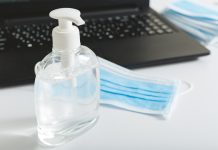
By far, the most popular method of non-hormonal birth control is the male condom. Convenient to carry around and easy to make use of even at a moment’s notice, condoms help prevent STIs and are about 98 percent effective at preventing pregnancy when used correctly. Unfortunately, with “normal” use, condom efficacy drops to about 70 percent, which means that almost 30 people out of every 100 don’t know how to use condoms properly. Here is a look at how you can practice safe sex by using condoms effectively.
One of the first steps to proper condom use begins long before you and your partner start getting hot and heavy. You need to store condoms in a dry, cool place and make sure they are out of the path of direct sunlight. It’s also important that you keep tabs on the expiration date of your condoms and replace them as soon as the date passes. Failing to care for condoms correctly before you use them can make them lose structural integrity–which means breakage becomes much more likely.
Once you can be sure your condoms are in-date and well cared for, the time will hopefully come when it’s time to put them to use. Tear open the condom package along its edge (there’s usually a dotted line indicating where to rip). Don’t use your teeth, scissors, or any other sharp object to cut open the wrapper because these implements could actually end up damaging the condom itself.
Take a close look at the condom once it’s out of the wrapper and figure out which side is meant to face in. If you start putting the condom on and then realize it’s inside out, you need to throw it out and start again because the outside of the condom may have already been contaminated. Once your penis is hard, pinch the tip of the condom (leaving a reservoir for the semen to collect), and roll the sides of it all the way down the shaft. The condom should be snug but not uncomfortably tight.
If you and your partner want to use a lubricant, make sure that you only ever use one that is compatible with latex condoms. Water-based lubricants are almost always fine, but oil-based options tend to dissolve the latex and may cause the condom to break. If your partner is not also using another method of birth control (such as the pill, patch, IUD, etc.), you should use spermicide to help lower the chances of accidental pregnancy even further. Once you have applied any lubricants or spermicidal products, you are safe to have sex.
Immediately after ejaculation, you need to pull out from your partner. Hold onto the condom at the base of your penis as you go so that the condom can’t come loose while your partner could still be exposed to your semen. Remove the condom, place it in a tissue, and then throw it in the trash (don’t ever flush condoms down the toilet). Wash your hands thoroughly with soap and water after handling the condom.
A new condom must be used each time you want to have intercourse, and you should never try to reuse a condom or keep one in place until you become aroused again. Even if the condom doesn’t break, semen can leak out through the edges, and your partner can still get pregnant. If you feel a condom break at any time before or during intercourse, you need to stop what you’re doing immediately, remove the broken condom, and then put on a new one. Your partner may need to take emergency contraception within five days of the condom breaking in order to prevent pregnancy.
By following these steps toward effective condom use, you can always practice safer sex without missing out on any of the pleasure. Protect yourself and your partner from infections while preventing unwanted pregnancy using this inexpensive and effective method of birth control.







